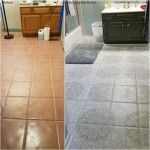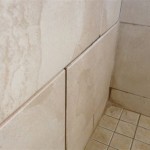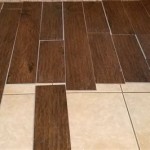Can You Put Vinyl On Top Of Tiles? A Comprehensive Guide
The question of whether vinyl flooring can be installed over existing tile surfaces is a common one among homeowners seeking to renovate their spaces. The prospect of covering old or unattractive tiles with vinyl offers a potentially faster and less disruptive alternative to complete tile removal. However, the feasibility and success of such a project hinge on several crucial factors that must be carefully considered.
This article will explore the conditions under which installing vinyl over tile is acceptable, the potential challenges and pitfalls, the necessary preparation steps, and the different types of vinyl flooring best suited for this application. Understanding these aspects is essential for achieving a durable, aesthetically pleasing, and structurally sound flooring solution.
Evaluating the Existing Tile Substrate
The existing tile floor serves as the substrate for the new vinyl flooring. Therefore, its condition is paramount to the success of the installation. A thorough assessment must be conducted to identify any issues that could compromise the integrity and longevity of the vinyl surface.
The first step is to check for loose, cracked, or uneven tiles. Loose tiles create voids beneath the vinyl, which can lead to flexing, indentations, and eventual damage. Cracked tiles, even if seemingly stable, can propagate cracks through the vinyl layer over time. Uneven tiles, whether due to lippage (where one tile sits higher than its neighbor) or general variations in height, will telegraph through the vinyl, resulting in an unsightly and uncomfortable walking surface. In all these instances, the problematic tiles must be addressed before installing the vinyl.
Addressing a small number of loose or cracked tiles typically involves removing and replacing them. The replacement tiles should be of the same thickness as the existing tiles to maintain a level surface. If the original tiles are unavailable, a suitable replacement of similar thickness can be used, and any slight height difference can be addressed with patching compound.
Significantly uneven tile surfaces present a more complex challenge. Minor lippage may be acceptable, especially if using a thicker vinyl flooring option. However, substantial height differences necessitate more extensive leveling. Self-leveling compound can be applied to create a smooth, even surface. Careful application is crucial, following the manufacturer's instructions precisely regarding mixing ratios, application thickness, and drying time. Multiple coats may be required to achieve the desired level of flatness.
Another critical factor to consider is the presence of moisture. Excessive moisture trapped beneath the tile or seeping through the subfloor can lead to mold growth, adhesive failure, and vinyl degradation. Before installing vinyl, the tile floor must be thoroughly dry. Moisture meters can be used to assess the moisture content of both the tile and the subfloor. If excessive moisture is detected, the source must be identified and addressed before proceeding. This might involve repairing leaks, improving ventilation, or installing a moisture barrier.
Cleaning the existing tile is also essential. Dirt, grease, wax, and other contaminants can interfere with the adhesion of the vinyl flooring. A thorough cleaning with a suitable cleaning solution is necessary to remove any surface impurities. After cleaning, the floor should be rinsed thoroughly and allowed to dry completely.
Selecting the Appropriate Vinyl Flooring Type
The type of vinyl flooring chosen for installation over tile significantly impacts the result. Different types of vinyl offer varying degrees of thickness, durability, and installation methods, each with its own advantages and disadvantages in this context.
Vinyl sheet flooring comes in large rolls, minimizing the number of seams and providing a relatively seamless appearance. Its inherent flexibility allows it to conform to minor imperfections in the tile surface. However, its larger size can make it more challenging to handle and install, especially in smaller or irregularly shaped rooms. Thicker vinyl sheet flooring options are generally better suited for covering tile, as they are more forgiving of minor unevenness.
Vinyl tile, available in square or rectangular formats, offers greater design flexibility and ease of installation compared to sheet flooring. Individual tiles are easier to handle and can be arranged in various patterns. However, the increased number of seams can be more susceptible to moisture penetration and require careful sealing. Self-adhesive vinyl tiles offer a simple peel-and-stick installation, but their long-term durability and bond strength can be questionable, especially over tile. Glue-down vinyl tiles provide a more secure and lasting bond but require the use of a suitable adhesive.
Luxury vinyl plank (LVP) and luxury vinyl tile (LVT) are premium options known for their realistic appearance and exceptional durability. These products often mimic the look of wood or stone and offer superior resistance to scratches, dents, and water damage. LVP and LVT typically come in thicker formats, making them more effective at concealing minor imperfections in the tile substrate. They are available in various installation methods, including glue-down, click-lock, and loose-lay. Click-lock LVP and LVT are particularly popular for DIY installations, as they require no adhesive and are relatively easy to install.
The choice of vinyl flooring should also be influenced by the intended use of the space. High-traffic areas, such as kitchens and hallways, require more durable and wear-resistant options. Areas prone to moisture, such as bathrooms and laundry rooms, necessitate waterproof or water-resistant vinyl flooring. The manufacturer's recommendations regarding installation over existing tile should always be followed.
Proper Installation Techniques and Considerations
Even with a well-prepared tile substrate and the appropriate vinyl flooring, proper installation techniques are crucial for achieving a successful result. Adhering to the manufacturer's instructions is always paramount, as variations exist between different products and brands.
For glue-down vinyl flooring, selecting the correct adhesive is essential. The adhesive should be specifically formulated for use with vinyl flooring and compatible with both the vinyl material and the tile surface. Apply the adhesive evenly using the recommended trowel size and allow it to tack up according to the manufacturer's instructions before laying the vinyl. Ensure that the vinyl is pressed firmly onto the adhesive, working out any air bubbles. Roll the entire surface with a floor roller to ensure a secure bond.
Click-lock vinyl flooring typically requires an underlayment to provide cushioning, sound absorption, and moisture resistance. The underlayment should be installed according to the manufacturer's instructions, ensuring that it is smooth and level. When installing the vinyl planks or tiles, follow the recommended locking mechanism procedures carefully. Use a tapping block and hammer to ensure tight seams and prevent damage to the locking system.
For vinyl sheet flooring, precise cutting and fitting are essential for a professional-looking installation. Use a sharp utility knife and a straight edge to cut the sheet to the exact dimensions of the room. Allow the sheet to relax and acclimate to the room temperature for a period before adhering it to the floor. Use a seam roller to ensure a smooth and even bond at the seams, and consider using a seam sealer to prevent moisture penetration.
Properly addressing transitions between the vinyl flooring and other flooring types is also important. Transition strips or moldings should be used to create a smooth and visually appealing transition. These strips should be securely attached to the subfloor and provide a flush transition between the two flooring surfaces.
Finally, after the installation is complete, allow sufficient time for the adhesive to cure or the click-lock system to settle before placing heavy furniture or subjecting the floor to heavy traffic. Follow the manufacturer's recommendations regarding cleaning and maintenance to ensure the long-term durability and appearance of the vinyl flooring.
Installing vinyl flooring directly over tile can be a viable and cost-effective solution for updating a space. However, proper assessment, preparation, and installation are essential to ensure a successful and long-lasting result. By carefully considering the factors outlined above, homeowners can achieve a beautiful and durable new floor that enhances the aesthetic appeal and functionality of their homes.

Installing Luxury Vinyl Over Existing Tiles Choices Flooring

Can You Put Vinyl Flooring Over Tile Igloo Surfaces

Transform Your Home Installing Vinyl Flooring Over Ceramic Tiles City Wall And Floor

How To Install Vinyl Flooring Over Tiles Linoleum Thrift Diving

New Vinyl Plank Flooring Over Tile Table And Hearth

Can You Lay Vinyl Over Tiles Luxury Flooring Floorbay

How To Lay Vinyl Flooring Sheet Over Tiles

Can You Put Lvp Over Tile Wc Supply Whole Cabinet

How To Tile Over Linoleum Floors Correctly

How To Tile Over Vinyl Flooring 2025 Today S Homeowner
Related Posts








